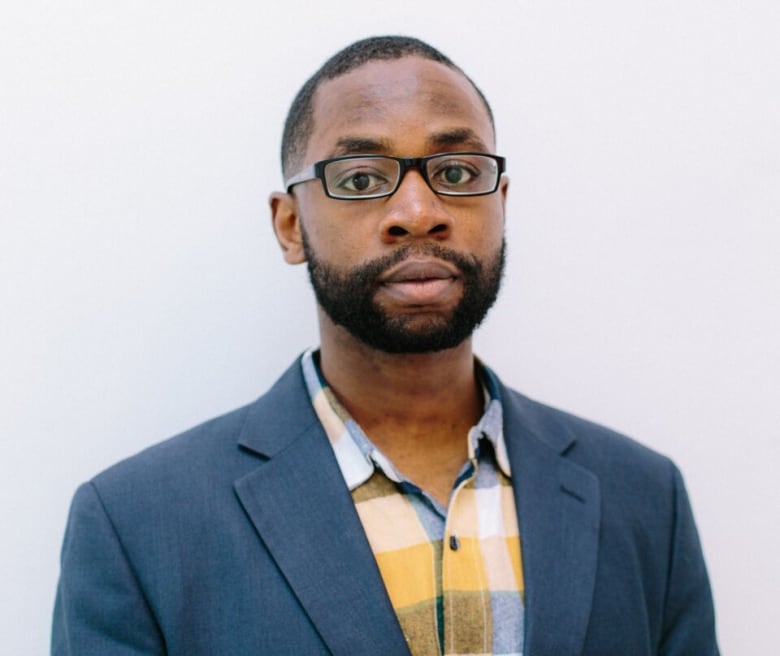The resistance of Black Canada: State surveillance and suppression
'There's this tradition of surveillance, and I've been told, 'Act as if you have a file.''

**Originally published February 27, 2018.
Canada's history of suppressing Black activism is coming to light like never before, thanks to researchers like PhD student Wendell Adjetey.
Wendell's historical research uncovers evidence of clandestine government surveillance in the 20th century, while also bringing to life overlooked parts of this history. His work highlights the struggles and setbacks of Black activists in the 20th century, helping us understand the ripple effect of those legacies today.
Canadians have contributed handsomely to a myth that makes us feel morally, politically, legally superior to the U.S., at least on the question of race.- Saje Mathieu, historian at the University of Minnesota
PhD candidate Wendell Adjetey spent the first seven years of his life in a slum just outside Accra, Ghana. When he and his siblings were able to reunite with their parents in Canada, it was "like winning the lottery."

At the time, he couldn't have imagined that he would eventually be doing a PhD in history at Yale University.
"No one would think that someone from the 'hood could ascend to such privilege and opportunity," says Adjetey.
"The research I do is primarily driven by the experience of other underdogs. In a weird way, my research is a way to honour my mom and dad, and the men and women who fought quietly … so everyone could have rights as a Canadian citizen."
Adjetey uses declassified materials to reveal how, during the 1960s and 1970s, U.S. and Canadian security services co-operated to undermine and arguably sabotage Black community activism on both sides of the border.
His work is one of the first historical accounts of how the two governments worked together to undermine Black citizenship rights.
"The broader story I'm trying to tell is one of push and pull," says Adjetey.
"With every human rights legislation, with opening up of Canada's borders to racialized people in the Commonwealth, there were measures which seemed to undermine that progressive trend."
Institutionalized racism
The Immigration Act of 1910 allowed government officials to reject immigrants on the basis of belonging to a race "unsuited to the climate and requirements" of living here.
"Our laws took race into account," says historian Saje Mattieu. "Especially our immigration laws. We had racialized panic around the arrival of certain people."
By 1962, the Canadian government updated its immigration policy to eliminate overtly racial and ethnic barriers. Around that same time, the government stepped up its surveillance of Black activists.
Attempted suppression is rooted in a white supremacy that creates this idea that all things that are not white are dangerous and bad and scary and in need of watching.- Syrus Marcus Ware, a core team member of Black Lives Matter - Toronto
As part of the increase in surveillance, the RCMP hired American FBI agent Warren Hart to infiltrate Black and Indigenous activist groups. Activists at the time reported that Hart encouraged members to take up arms.

But no one followed his suggestion.
Surveillance of Black Lives Matter
Black Lives Matter activists today continue to be tracked by police.
"I come from a generation of activists who came of age in the mid-90s and we were told by older activists [to] just assume your phones are tapped," says Syrus Marcus Ware.
"There's this tradition of surveillance, and I've been told, 'Act as if you have a file.'"
Guests in this episode (in order of appearance):
- Wendell Nii Laryea Adjetey is a PhD candidate at Yale University. His doctoral thesis is called From the North Star to the Black Star: African North Americans and the Search for a Land of Promise, 1919-1984. He is a Pierre Elliott Trudeau Scholar and currently a visiting scholar at MIT.
- Saje Mathieu is a professor of history at the University of Minnesota, and author of North of the Color Line: Migration and Black Resistance in Canada, 1870-1955.
- Sheldon Taylor is a historian who completed his PhD at the University of Toronto, where he developed courses on African-Canadian history and the African diasporic experience. His PhD dissertation is called Darkening the complexion of Canadian society: black activism, policy-making and black immigration from the Caribbean to Canada, 1940s–1960s.
- Syrus Marcus Ware is a visual artist and core team member of Black Lives Matter – Toronto.
- Simone Browne is an associate professor in the Department of African and African Diaspora Studies at the University of Texas, Austin. She is the author of Dark Matters: On the Surveillance of Blackness.
- Robyn Maynard is an activist, writer and author of Policing Black Lives: State Violence in Canada from Slavery to the Present.
Special thanks to the Multicultural History Society of Ontario for sharing the 1978 recording of activist Dudley Marshall.
**This episode is part of our Ideas from the Trenches series and was produced by Nicola Luksic and Tom Howell.